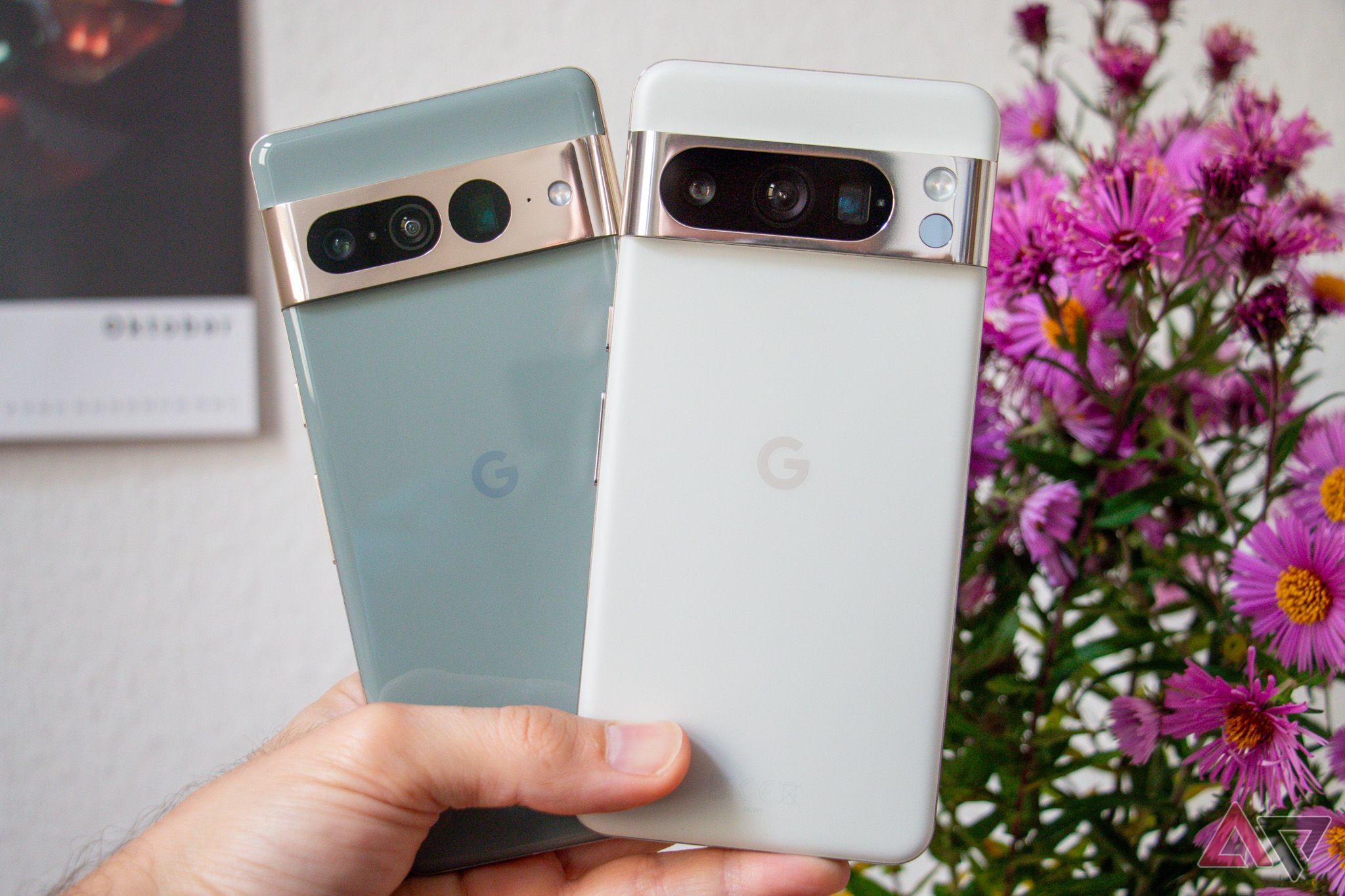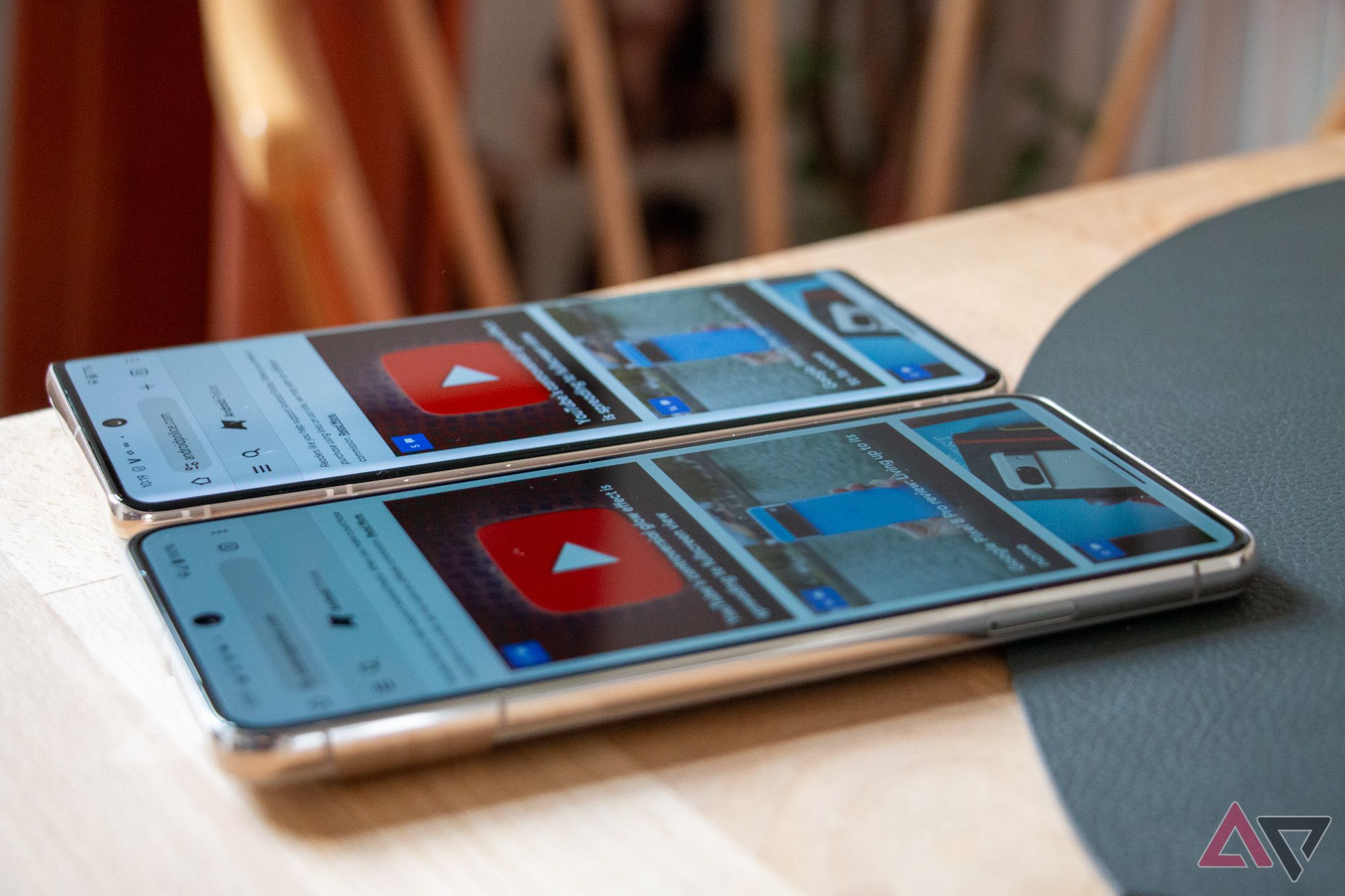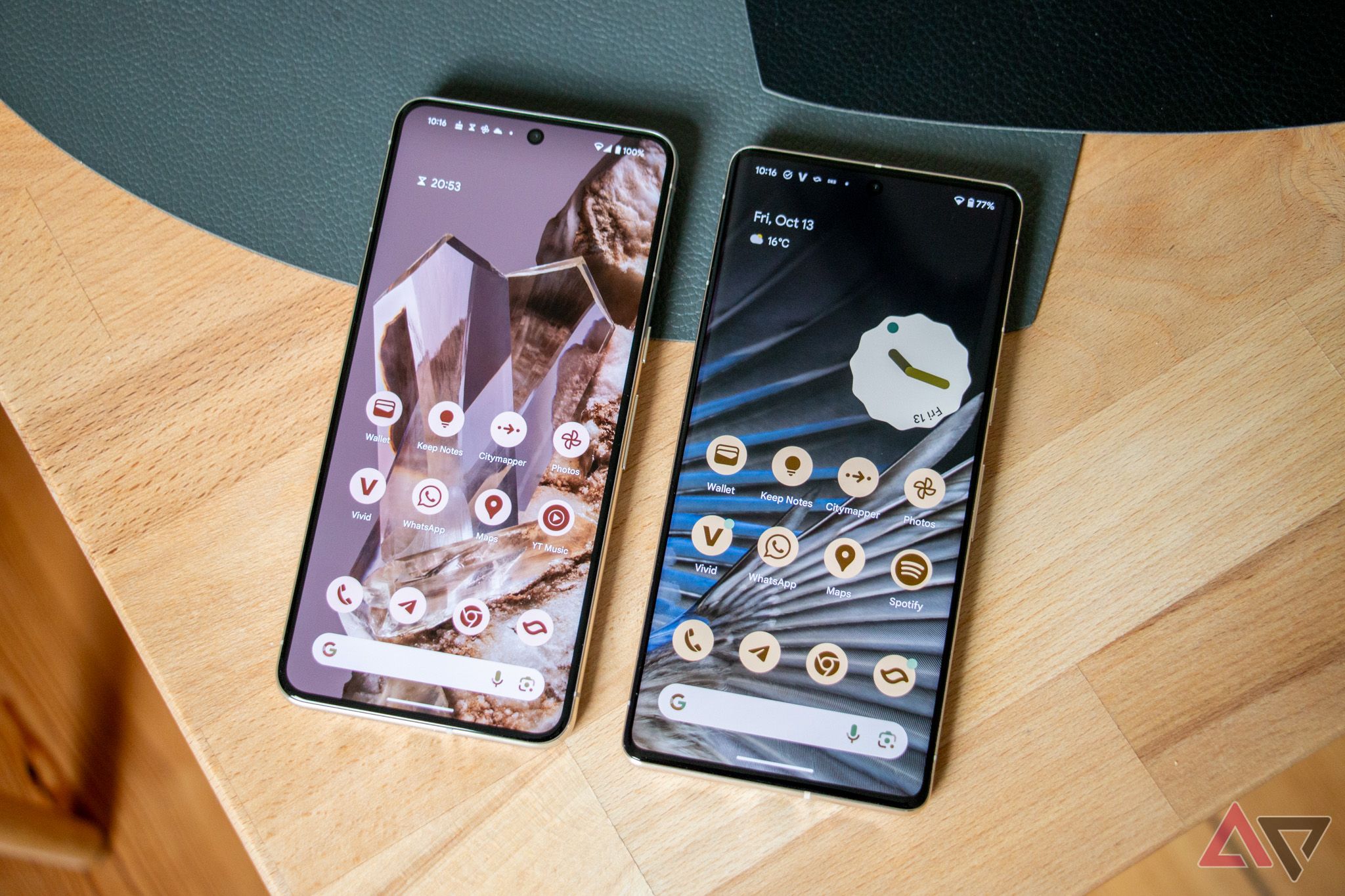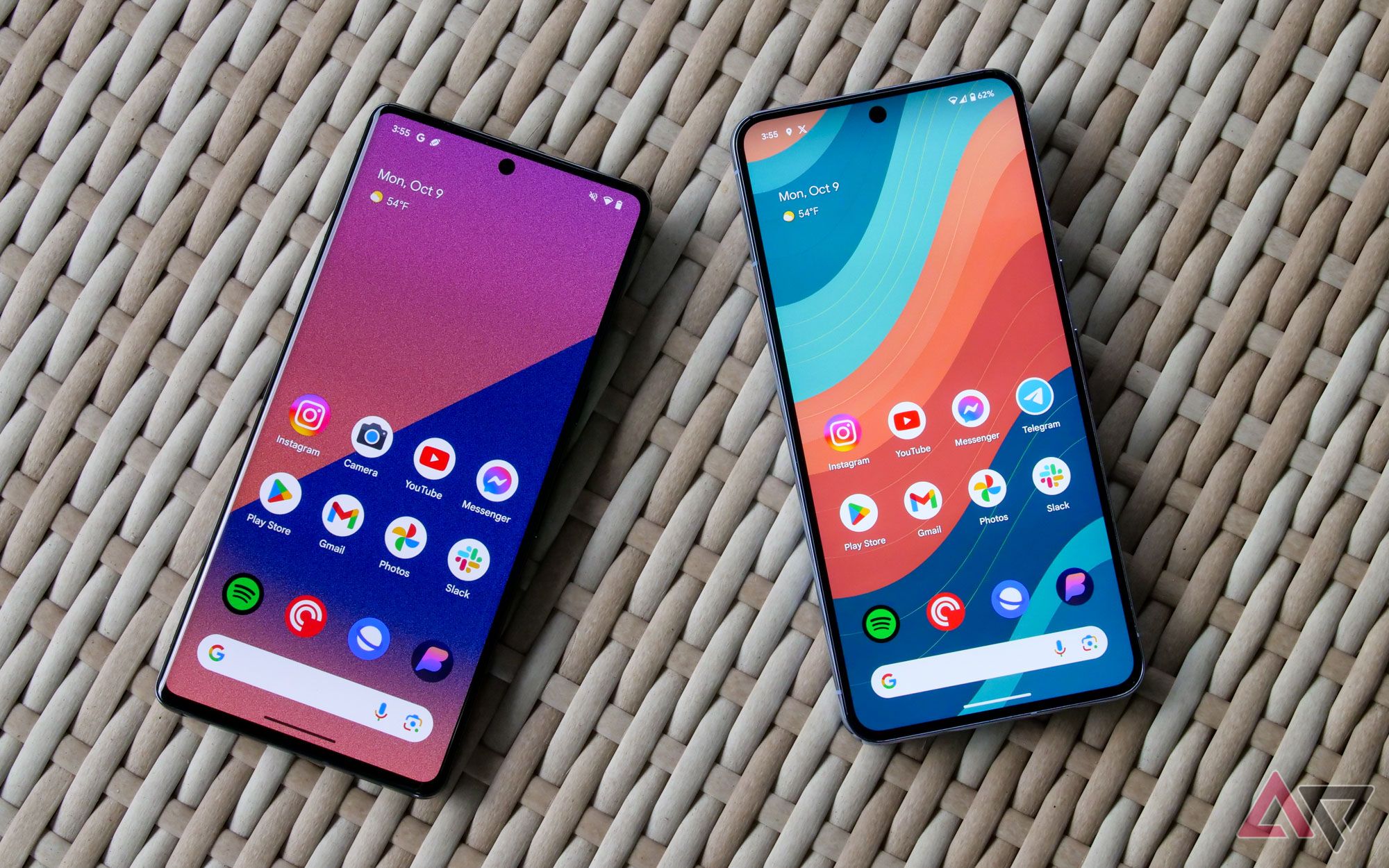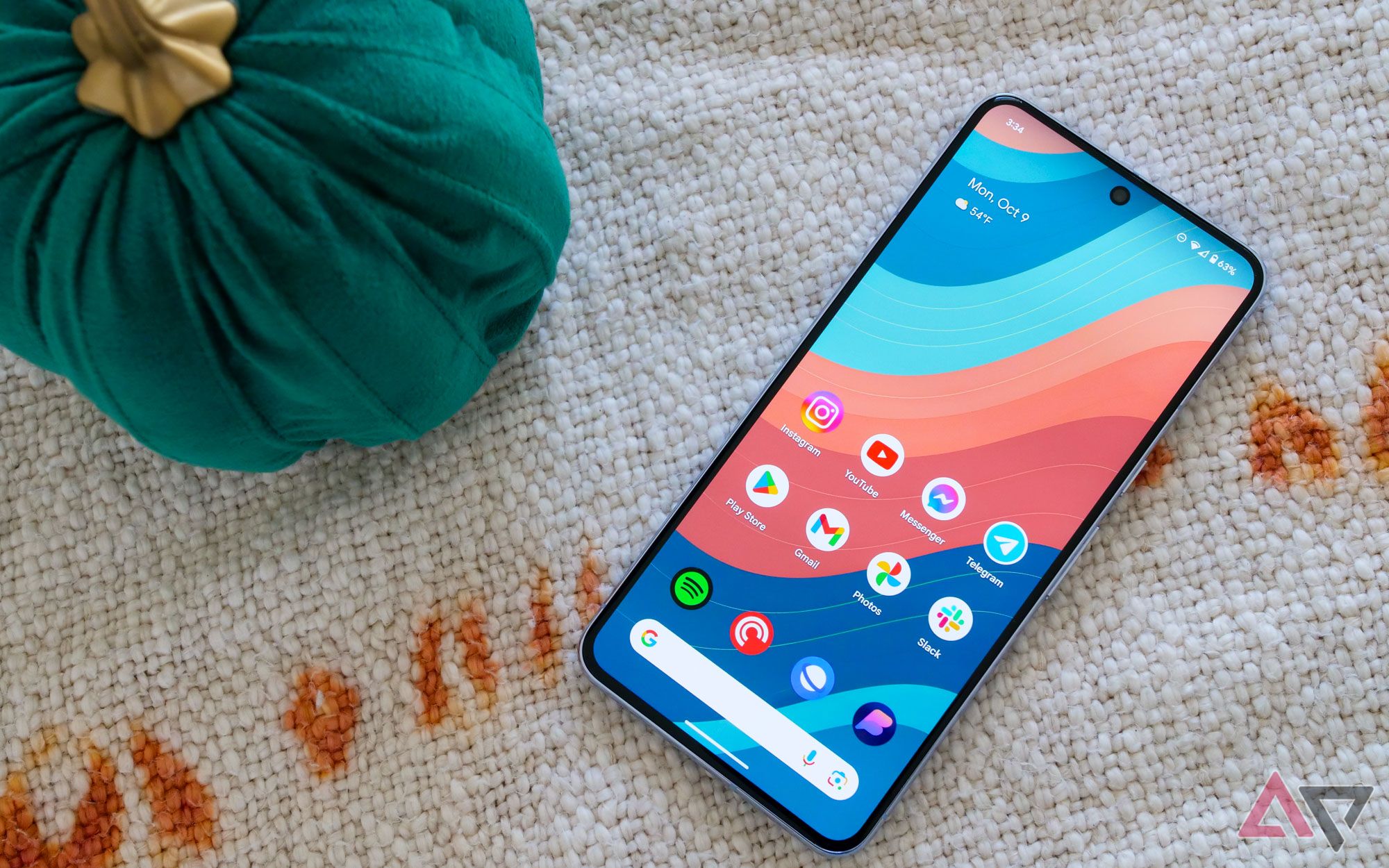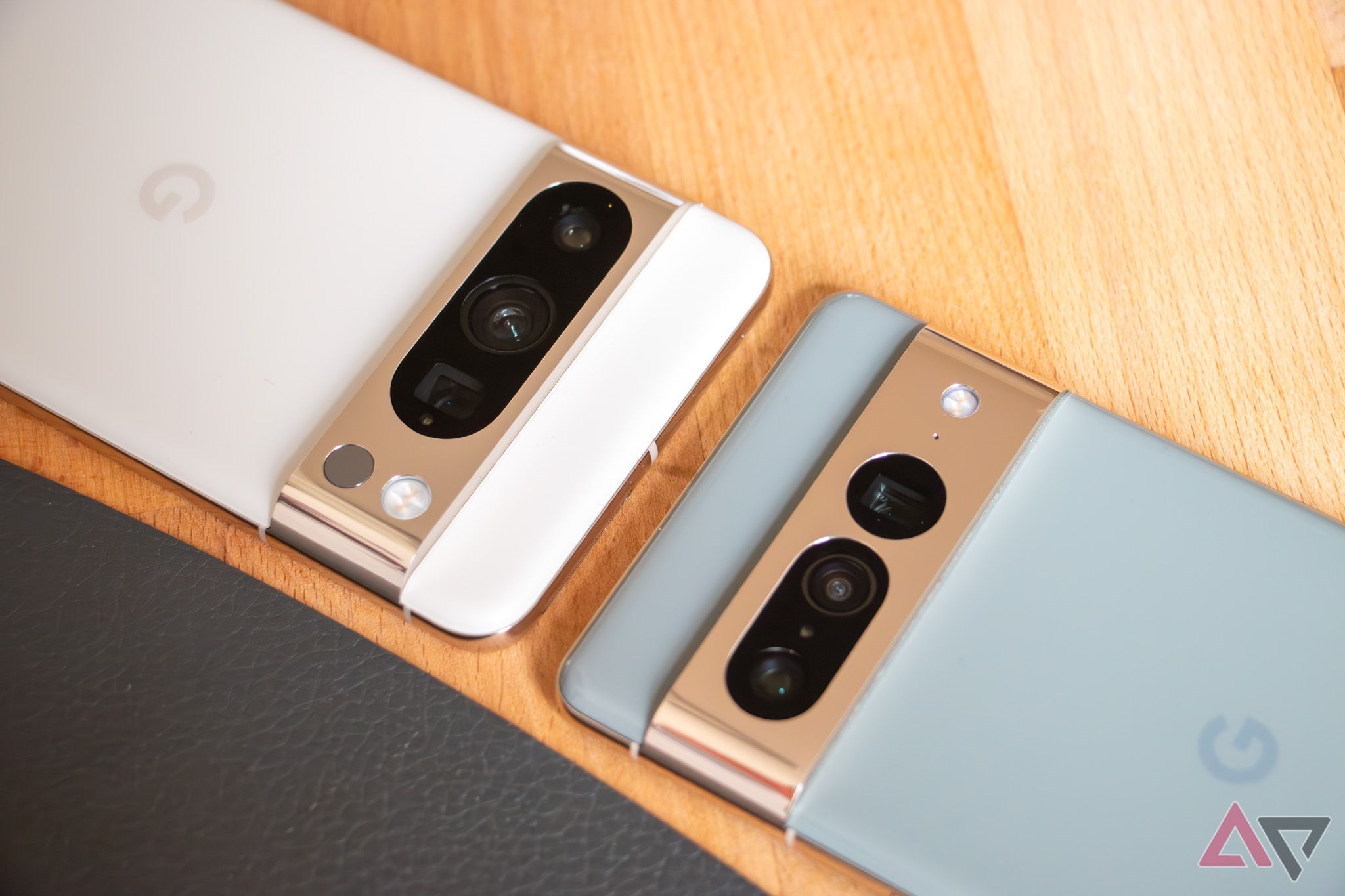-
Google Pixel 8 Pro
Google’s most pro model yet$900 $999 Save $99The Google Pixel 8 Pro fixes almost all gripes people have had with the series and adds so much more on top. You get to enjoy an incredible seven years of OS updates, a fully redone camera system, and a more refined look.
Pros- Screen isn’t curved anymore
- Upgraded camera system all around
- 7 years of OS upgrades
Cons- Gimmicky temperature sensor with questionable use
- $100 more expensive than its predecessor at launch
-
Google Pixel 7 Pro
Still a great phone, but with flaws$460 $899 Save $439The Google Pixel 7 Pro is no slouch, and it was Google’s top dog last year. Compared to the Pixel 8 Pro, it’s also still a good choice for those people who actually want a curved screen.
Pros- More affordable at this point
- Curved display may help with grip
Cons- Much shorter remaining software support window
- Missing many new headlining camera features
- Processor is prone to running hot
With the release of the Pixel 8 Pro, Google is showing that it isn’t afraid to push the boundaries of what you should expect from a flagship device. The Pixel 8 Pro improves on several areas that the Pixel 7 Pro was criticized for. In taking one of the best camera phones on the market and improving its lenses, Google even improved on things that the Pixel 7 Pro did well.
Even today, the Pixel 7 Pro is a fantastic device, but does the Pixel 8 Pro do enough to justify the upgrade? Maybe you found a Pixel 7 Pro at a steep discount and you are trying to figure out if spending a few hundred more on the Pixel 8 Pro is justified. No matter the reason, we pit these two great phones against each other to help determine which is the best for you.
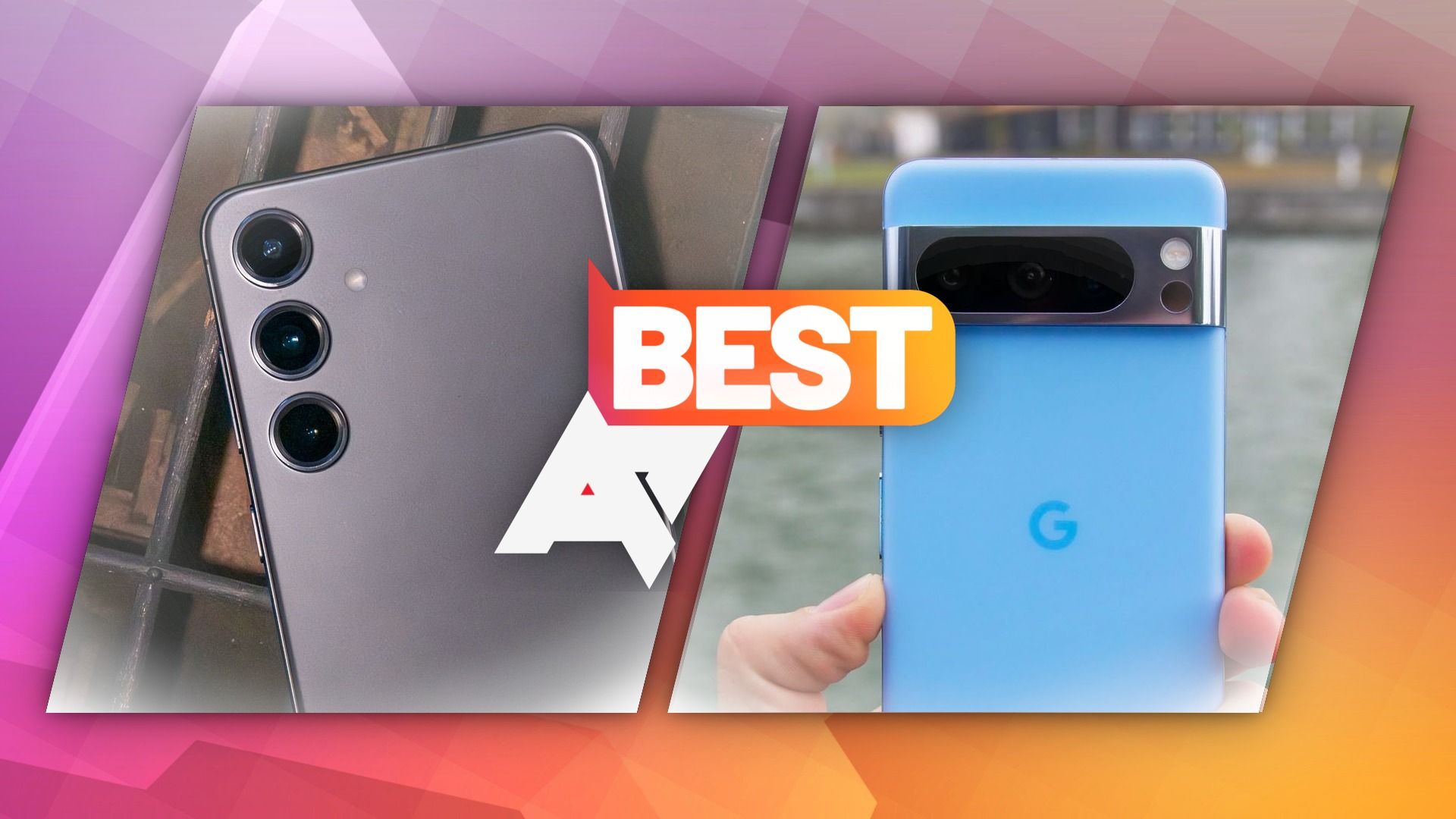
Best Android phones in 2024
In the market for a new phone? Get the best Android experience with these flagship phones
Price, specs & availability
Let’s get the most painful change out of the way first. The Google Pixel 8 Pro is $100 more expensive than the Pixel 7 Pro. Its 128GB version costs $1,000, and it can go up to $1,400 if you need 1TB of storage — that’s double the storage that the Pixel 7 Pro offers in its biggest configuration. When the Pixel 7 Pro launched, its 128GB version went for $900, which is still the official price that Google sells it at. You can pick it up for much cheaper when it’s on sale, though, with rebates of about $250 often available over the last year. It’s likely that it will be discounted even further now that it’s not the latest and greatest anymore.
The Google Pixel 8 Pro is on sale now, and Google will keep selling the Pixel 7 Pro this year, so it’s likely that it will also be available at other retailers for the foreseeable future. The Google Pixel 8 series is launching in a few more regions than the 7 series. It has launched in the US and Canada along with most Western European countries (Austria, Denmark, France, Germany, Ireland, Italy, Netherlands, Norway, Portugal, Spain, Switzerland, Sweden, UK) as well as Australia, India, Japan, Singapore, and Taiwan.
-
Google Pixel 8 Pro Google Pixel 7 Pro SoC Google Tensor G3 Google Tensor G2 RAM 12GB 12GB Storage 128GB, 256GB, 512GB, 1TB UFS 3.1 128GB, 256GB, 512GB Battery 5,050mAh 5,000mAh Ports USB-C 3.2 OTG USB-C Operating System Android 14 Android 14 Front camera 10.5MP selfie camera 10.8MP, f/2.2 Rear camera 50MP main; 48MP ultrawide; 48MP telephoto 50MP f/1.85 primary with OIS; 12MP, f/2.2 ultrawide; 48MP, f/3.5 5x telephoto with OIS Connectivity UWB, NFC NFC, UWB Dimensions 162.6 × 76.5 × 8.8mm 76.6 x 162.9 x 8.9mm Colors Obsidian, Porcelain, Bay Obsidian, Snow, Hazel Weight 213g 212g Charge speed 30W wired, 18W wireless (with Pixel Stand 2), 12W wireless (Qi), 5W reverse wireless 30W wired, 23W wireless IP Rating IP68 IP68 Price From $999 From $899
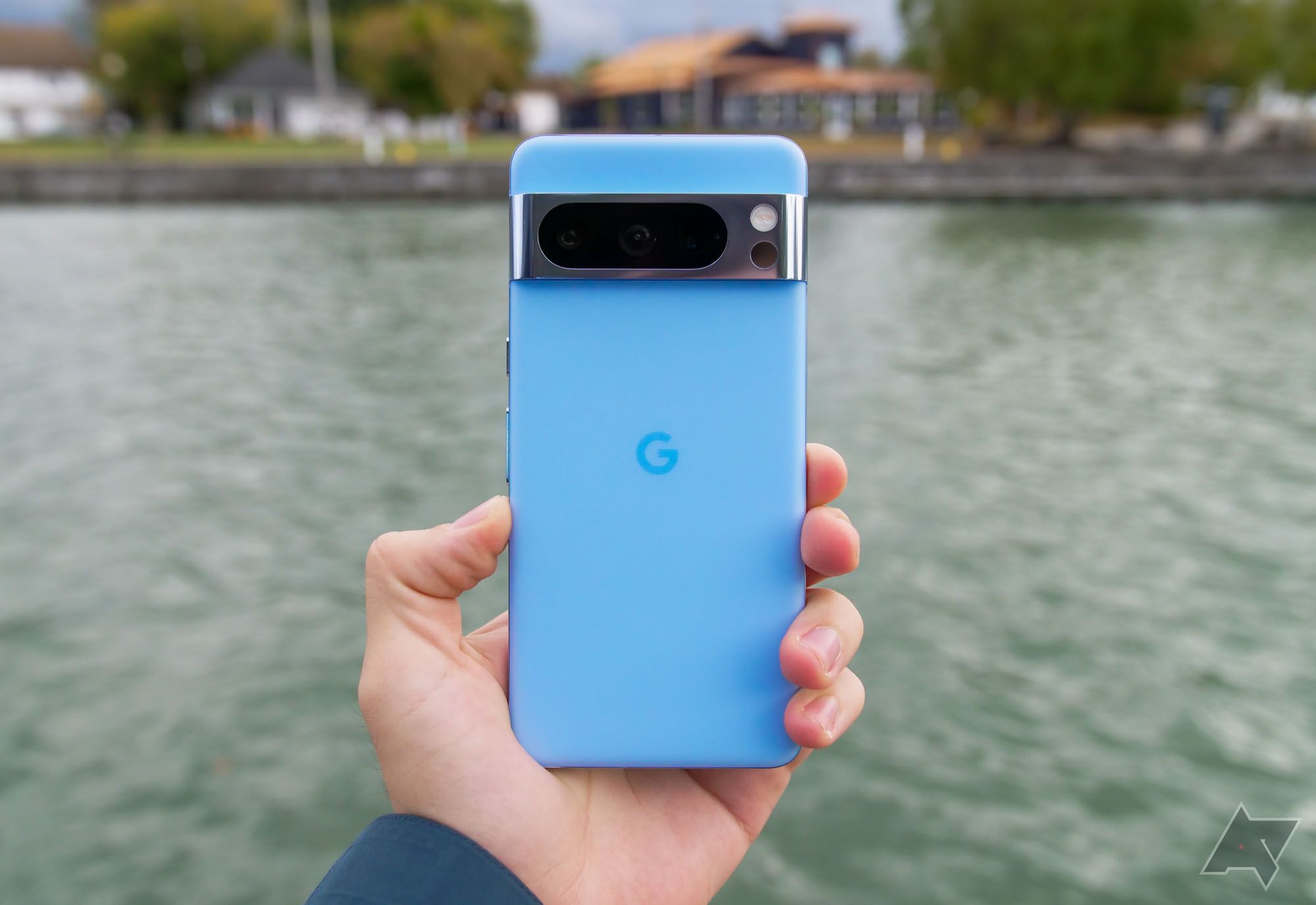
Google Pixel 8 Pro review: Living up to its name
If you want to see the future of Google, the Pixel 8 Pro is the phone to buy

Google Pixel 7 Pro review: A showcase for Google
Some small design changes are welcome, but Google’s usual bag of AI-powered tricks are the real treat
Design
It’s all in the details
On the surface, the Google Pixel 7 Pro and the Pixel 8 Pro look similar. Google certainly stuck with its design language over the last three years. They both have the signature visor-style camera bar that stretches across the top back of the phones, made of glass and polished aluminum that seamlessly transitions into the frame. On the front, they both have big 6.7-inch screens with a hole-punch selfie camera in the middle of the status bar.
The details are certainly what matters most here. The Google Pixel 8 Pro offers an upgraded back glass with a matte finish. It goes a long way towards hiding fingerprints and just plainly feels nicer to the touch, giving the phone a more premium look and feel. The smooth, non-reflective finish also offers a nice contrast to the polished aluminum rail, though I fear that just like with the Pixel 7 Pro, the metal is going to show small and big scratches rather easily.
The Pixel 8 Pro also has massively bigger lenses that take up more space in the camera bar, and thus, it only offers a single glass cutout for all three cameras on the back. In contrast to that, the Pixel 7 Pro has its telephoto camera in an extra circular cutout next to the pill-shaped glass for the primary and ultrawide. This gives it a more playful look that also mimics Google’s Material You software design to an extent.
Display
No more curved edges
While the display is the same 6.7 inches on the Pixel 8 Pro and the Pixel 7 Pro, it’s arguably the biggest external differentiator between the two. While the Pixel 7 Pro has slightly curved edges and unevenly sized bezels at the top and bottom, the Pixel 8 Pro finally offers a flat-screen with completely even spacing all around it. It makes the Pixel 8 Pro look a lot more premium in my eyes and gets rid of annoying reflections that are inevitably a part of every curved screen.
One point curved screen fans often rightly make is that this kind of design makes it easier to grip big phones with huge displays, but the Pixel 7 Pro already has significantly less steep curves than the Pixel 6 Pro before it or other curved displays out there. As such, I personally don’t really notice much of a difference in handling these two big phones in regards to the display, but I can imagine that people with smaller hands might disagree ever so slightly.
The more rounded corners of the Pixel 8 Pro make good for the less curved sides for me — both of these designs come with their own tradeoffs. Truth be told, neither the Pixel 7 Pro nor the Pixel 8 Pro is a phone you’ll be comfortable using one-handed for extended periods of time — you’ll have to look elsewhere for good small flagship phones.
Moving back to the displays themselves, Google claims some impressive improvements in display technology, too, even though the Pixel 8 Pro offers a slightly lower resolution of 1344 x 2992 vs 1440 x 3120 on the Pixel 7 Pro. It makes good on that with maximum brightness, with the Pixel 8 Pro reaching up to 2,400 nits at peak and 1,600 in HDR. For the Pixel 7 Pro, that’s only 1,000 and 1,500 nits, respectively, which are already good numbers in themselves.
The Pixel 8 Pro can also officially go as low as 1Hz to as high as 120Hz when it comes to the refresh rate, while the Pixel 7 Pro can only go down to 10Hz. This is good for battery life when using the always-on display or looking at other static content, such as an e-book page.
Software
Extra AI tricks
Both the Google Pixel 8 Pro and the Pixel 7 Pro are running Android 14, so the core experience is identical across both phones. There are some significant differences you should be aware of, though. The Pixel 8 Pro is slated to receive seven years of Android upgrades (with seven years of spare parts available in case the hardware breaks, too) while the Pixel 7 Pro is only guaranteed to get three major Android updates and five years of security patches at the time of writing. The Pixel 7 Pro launched with Android 13, so at this point, one of its software updates is already used up, leaving you stuck on Android 16 (if it’s called that) in 2025. In contrast to that, the Google Pixel 8 Pro will get updates all the way until 2030, at which point we should have Android 21 (again, if that’s still how Google numbers its releases then).
Beyond the update promise, there are some more exclusive software upgrades in the Pixel 8 Pro that may never make it to the Pixel 7 Pro. Both phones support biometric face unlock, but only the Pixel 8 Pro offers so-called Class 3 biometrics. This means that the Pixel 8 Pro lets you use Face Unlock to enter secure applications like your online bank or make payments. Google says that it uses more advanced machine learning and upgraded algorithms to achieve this in a secure manner without relying on extra hardware like the Pixel 4’s or the iPhone’s IR blaster, and it’s possible that these algorithms can only run reliably and fast on the new Tensor G3 chipset inside the Pixel 8 series.
The Google Assistant is another area that gets some extra features on the Pixel 8 series. You can use AI to summarize articles for you (only in English in the US), which doesn’t work all that well all the time.
Bilinguals can look forward to using Gboard dictation on the Pixel 8 series. For now, they’re the only phones that can work with input from two different languages, though in my testing, there were quite a few instances where it mixed up my English and German, creating some unintelligible gibberish occasionally.
Performance and hardware
Snappy performance, less heat
Google’s new Tensor G3 processor promises to bring better performance at lower temperatures. This is direly needed given the overheating issues that owners of previous Pixel generations have reported, especially in the summer. Only a long-term test can really tell how well the Pixel 8 Pro fares in this regard, but based on our initial review, we can confidently say that the phone remains relatively cool during everyday usage.
It’s not on the same level as something like the Samsung Galaxy S24 Ultra, with its Snapdragon 8 Gen 3 processor, but it doesn’t seem to be as bad as the Pixel 7 and 7 Pro.
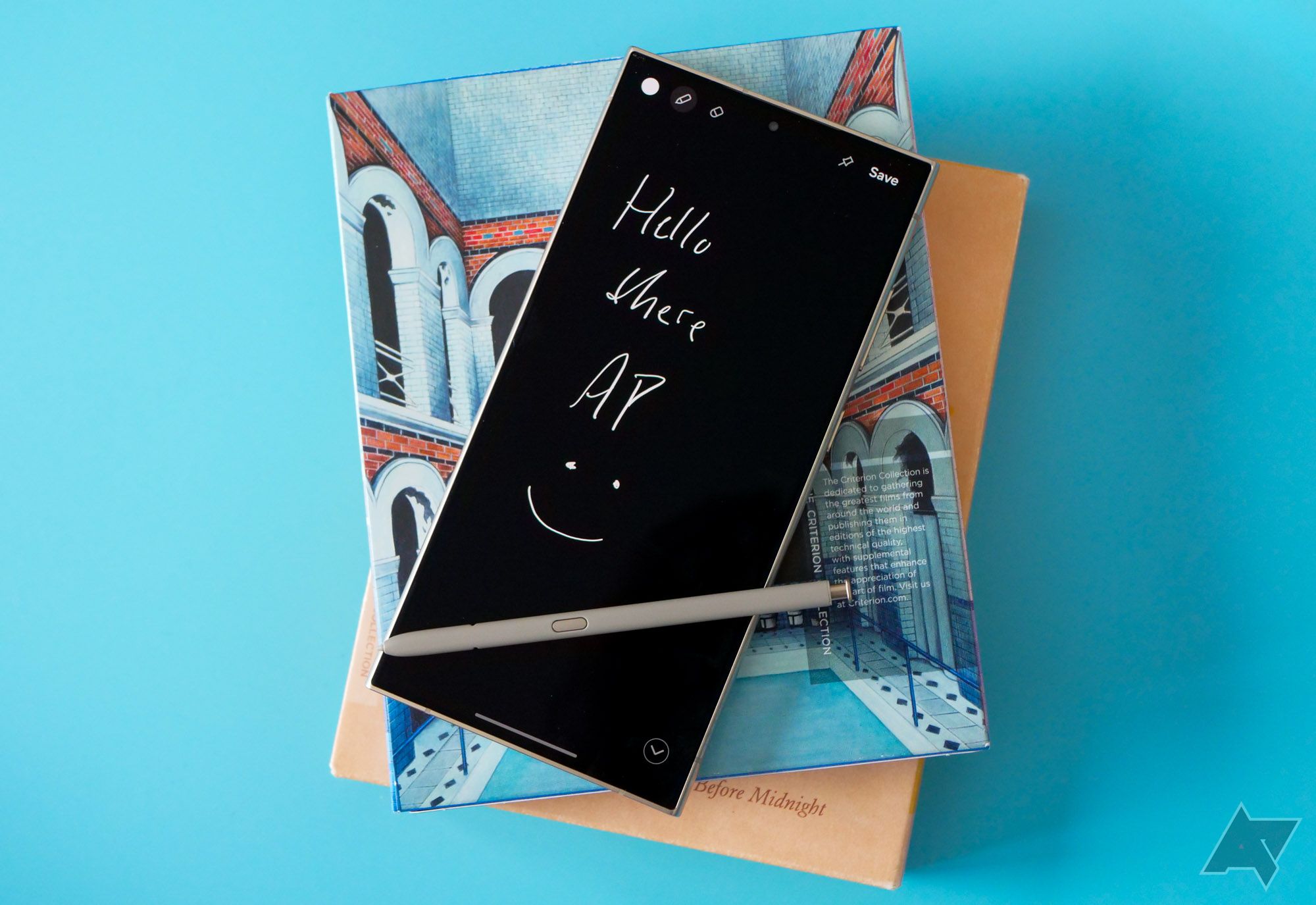
Samsung Galaxy S24 Ultra review: Still the best, unless you take photos
Without any meaningful changes, Samsung’s latest phablet feels like a do-over for last year’s smartphone
This naturally changes when you use the Pixel 8 Pro for more intensive tasks like gaming or when using its Magic Editor AI tool, both things that are heavy on the processing pipeline. That’s also the case when taking tons of pictures or longer videos. Overall, though, the Pixel 8 Pro seems like a vast improvement over the Pixel 7 Pro in this regard.
We can also confirm that the Pixel 8 Pro performs well without regards to heat. The phone remains snappy and consistent even during more intense tasks, leaving apps running in the background mostly reliably, offering no bad surprises in the performance area.
When it comes to other hardware, the Pixel 7 Pro and 8 Pro are largely identical. They both have 12GB of RAM (LPDDR5X on the 8 Pro vs LPDDR5 on the 7 Pro), UFS3.1 storage (the 8 Pro adds a 1TB model at the top of the lineup), the Titan M2 security chip, and the usual 5G antennas. The Pixel 8 Pro upgrades to Wi-Fi 7 and Bluetooth 5.3, though.
On the security front, the Pixel 8 Pro now lets you unlock secure apps like your bank with its face unlock mechanism. On the Pixel 7 Pro, face unlock was limited to bypassing the lock screen. The Pixel 8 Pro doesn’t add any new hardware to achieve this — instead, Google says it relies on more advanced algorithms and machine learning. The tradeoff is that this unlock method doesn’t work in low light, which IR blaster-based alternatives like those on the iPhone can do. At the same time, the Pixel 8 Pro manages to keep the camera cutout in its display small, so that’s a win.
The weirdest hardware addition that no other flagship phone has is the Pixel 8 Pro’s thermometer. It allows you to measure temperatures on countless different surfaces, but it hasn’t received an FDA clearance (yet), making it completely useless for what it could have been good for back in 2020 and 2021: measuring if someone has a fever. It seems to me like this idea was pitched in the middle of the pandemic and then nobody stopped to think if it was still necessary to have it in 2023.
Battery life
Easily lasts a full day
Another point of contention with the Pixel 7 Pro and other Google phones before it was battery life, which was on the lower end of the premium spectrum. In our reviews, the Pixel 8 Pro certainly proved that it improved in this area. We could consistently reach six to seven hours of screen-on time with the Pixel 8 Pro, which is a lot better than our experience with Tensor G2 phones, including the Pixel 7 Pro. You could easily get a day and a half of regular usage out of the phone.
Google managed to achieve this without adding a significantly bigger battery, with the Pixel 8 Pro only having 50mAh more than the Pixel 7 Pro with its 5,000mAh battery.
When it comes to charging, the Google Pixel 8 Pro is ever so slightly faster than the Pixel 7 Pro. The Pixel 8 Pro supports 27W, which is five more than the Pixel 7 Pro. The difference is clear when looking at charging speeds, but in everyday life, the win is honestly negligible. We can only hope that Google will finally offer competitive charging speeds next year.
Cameras
Quality improvements
There are bigger year-over-year camera improvements on the Pixel 8 Pro than we could have hoped for. The Pixel 8 Pro sticks with a 50MP primary camera, but upgrades it to one with a bigger sensor that can capture more light. The biggest difference here is the upgraded 48MP ultrawide camera, which represents a big jump in quality compared to its 12MP predecessor. The 5x telephoto camera has also been upgraded, now supporting optical image stabilization, too.
In practice, this means that you can expect even better photos than ever before from the latest Pro Pixel model. Thanks to the bigger sensor, the Pixel 8 Pro’s Night Sight kicks in slightly later than on the Pixel 7 Pro without losing image quality. If you like ultrawide photography, the new lens also supercharges the experience, managing to capture a lot more details than the 12MP camera on the Pixel 7 Pro. All things considered, the Pixel 7 Pro is still a great photography phone, too, and while there are some improvements, you’re not necessarily missing out on too much with the 7 Pro.
On top of the new hardware, you can also enjoy some new software options like Magic Editor, which lets you fully recompose images thanks to AI, an improved Magic Eraser that’s even better at getting rid of distractions in your images, Magic Audio Eraser to get rid of distracting sounds in your videos, and many more features that Google said would be coming soon with the December Feature Drop.
Which is right for you?
If you’re in the market for a new phone and deciding between the Pixel 7 Pro and the Pixel 8 Pro, I can only recommend going for the Pixel 8 Pro. It is upgraded all around compared to its predecessor, finally getting rid of the curved screen in favor of even bezels all around, offering a smooth, fingerprint-repellent glass texture on the back, an upgraded camera system all around, seven years of Android updates, and improved battery life and performance, as far as we can tell right now.
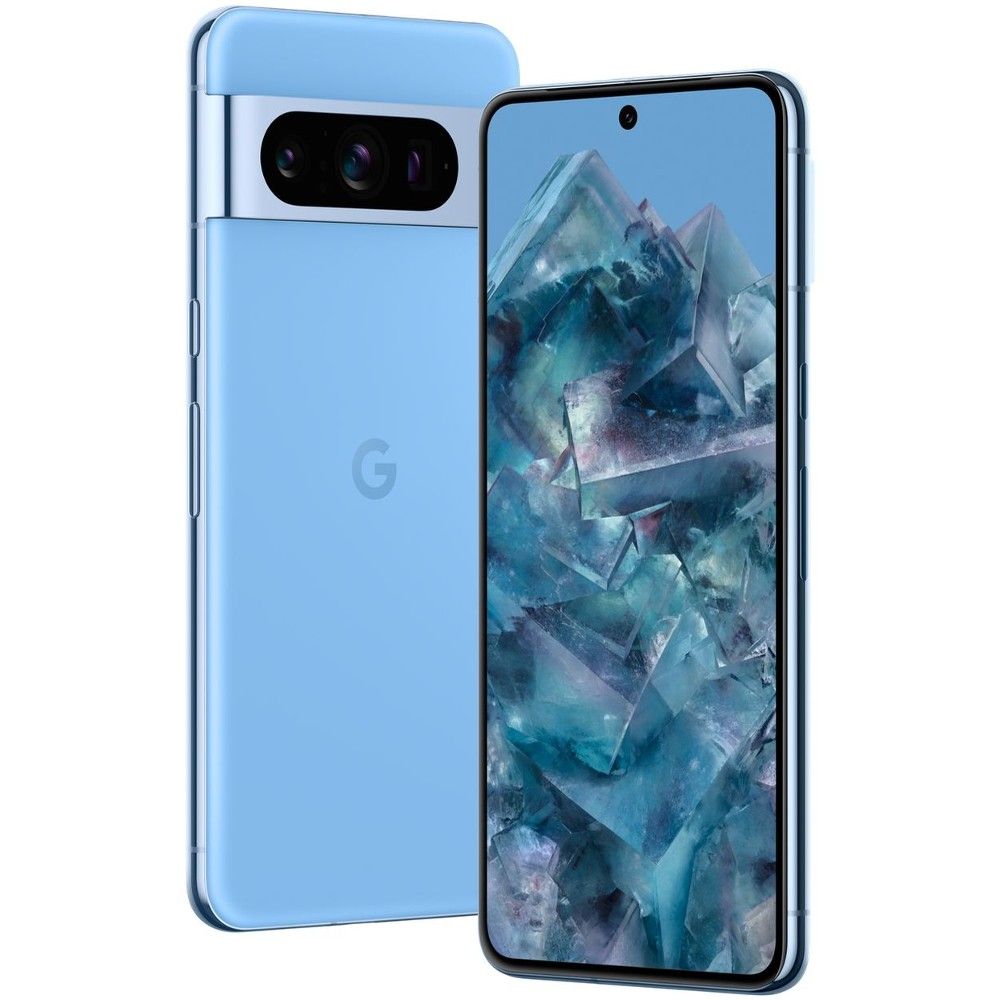
Google Pixel 8 Pro
The Google Pixel 8 Pro is the company’s latest flagship, boasting a new Tensor G3 chip, a brighter screen, and a new camera array capable of capturing even more light. As usual, the real power lies in Google’s Tensor chip, which offers even more photo enhancement and image editing features.
Of course, the Pixel 7 Pro isn’t totally obsolete. $1,000 is a lot to spend on a phone, so the Pixel 7 Pro might be a great option if you’re looking to save a few bucks, but you really want a big screen and a telephoto camera, which the regular Pixel 8 won’t give you. In this case, the Pixel 7 Pro is still a viable choice, even if you have to be aware of the software update tradeoff that it comes with — at the time of writing, it only has two more OS updates ahead of it and four more years of security patches.
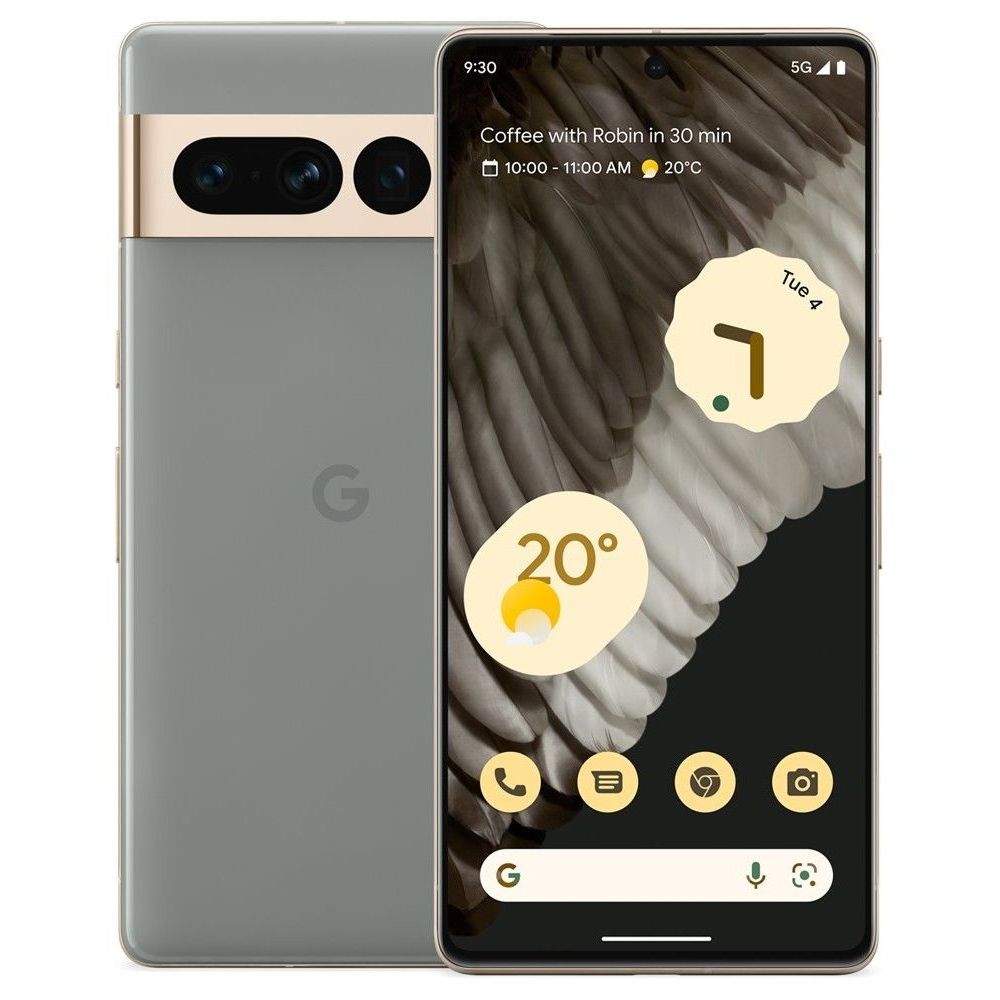
Google Pixel 7 Pro
Google’s Pixel 7 Pro refines the Pixel experience after the 6 Pro’s initial stumbles last year, improving stability and taking the camera prowess to new levels with image fusing and 4K60fps video on all cameras. 30W fast charging and Pixel’s addictive features like automatic Call screening and Pixel recorder help make the Pixel 7 Pro an alluring phone even as an iterative update.




